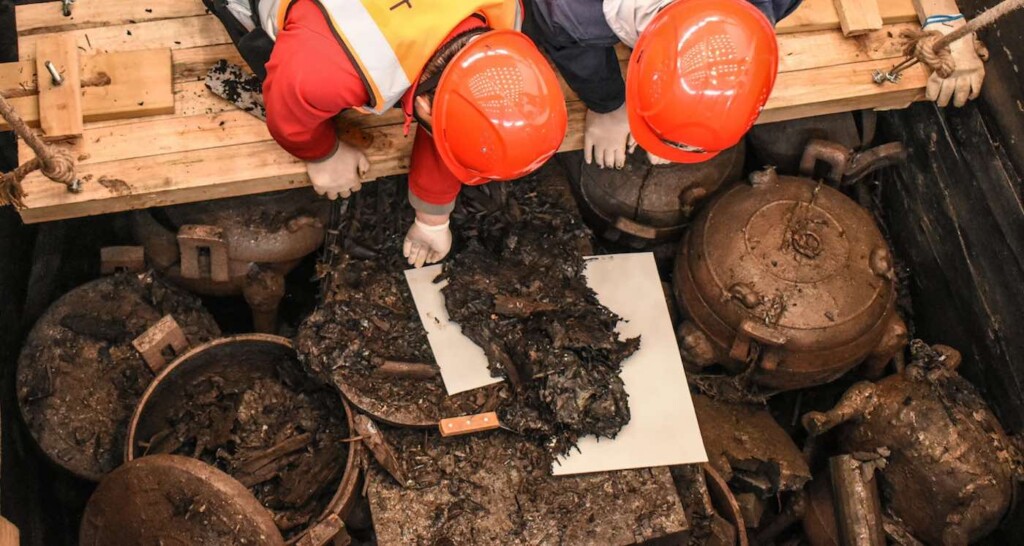
In mid-April, Chinese archaeologists announced they had completed the first stage of excavations on a kingly tomb believed to date back 2,200 years to the state of Chu.
An integral part of fledgling Chinese history, Chu was a powerful kingdom that once conquered and annexed the state where Confucius was born, and the archaeologists believe they know exactly who it is that’s buried inside.
Located in the eastern province of Anhui, work at the tomb began in 2019 because reports had found it was a common target of looters. Excavations have shown it to be the most complex funerary structure from its time ever discovered in China.
Over 3,000 relics, including lacquered wood products, bronze vessels, figurines, chariot and horse pits, and sacrificial remains were all found in addition to a woven bamboo mat that allowed scientists to get a radiocarbon analysis that showed the tomb’s age.
âAt present, the on-site work has entered the second stage within the coffin chamber, that is, the excavation and cleaning of the interior of the coffin chamber,” Gong Xicheng, deputy director of the Anhui Provincial Institute of Cultural Relics and Archaeology, told Xinhua.
âPerhaps by then, the identity of the tomb owner will be revealed and the mystery can be solved.â
IN ARCHAEOLOGICAL NEWS: Archaeologists May Have Found the Villa Where the Roman Emperor Augustus Died
The history of even ancient China is astonishingly well recorded and researched, and this historical canon suggests that the owner may be King Kaolie who reigned from 262 to 238 BCE in the state of Chu, which lasted from 770 to 228 BCE.
It’s currently the working hypothesis because Kaolie moved the Chu capital to Shouxian County in Anhui province, where the tomb was found. Aside from Kaolie, there were three other kings who ruled Chu from Shouxian, but Kaolie’s reign lines up nicely with the carbon dating from the mats, and the other three kings all had misadventures that meant they probably didn’t have the luxury of a tomb as grand as this one.
MORE CHINESE TOMBS: Ming Dynasty Tomb of an Imperial Official Discovered in Exquisite State of Preservation
The state of Chu emerged from the breaking up of the Zhou Dynasty, one of the four official Chinese dynasties to exist before the common era, and one which saw the establishment of several of Chinese civilization’s foundational texts and beliefs, such as the I Ching, or Book of Change, and early Confucianism.
Excitingly, only one-third of the tomb has been fully excavated, and potentially many more secrets and treasures are waiting to be discovered.
SHARE This Great Archaeological Discovery With Your Friends…Â

